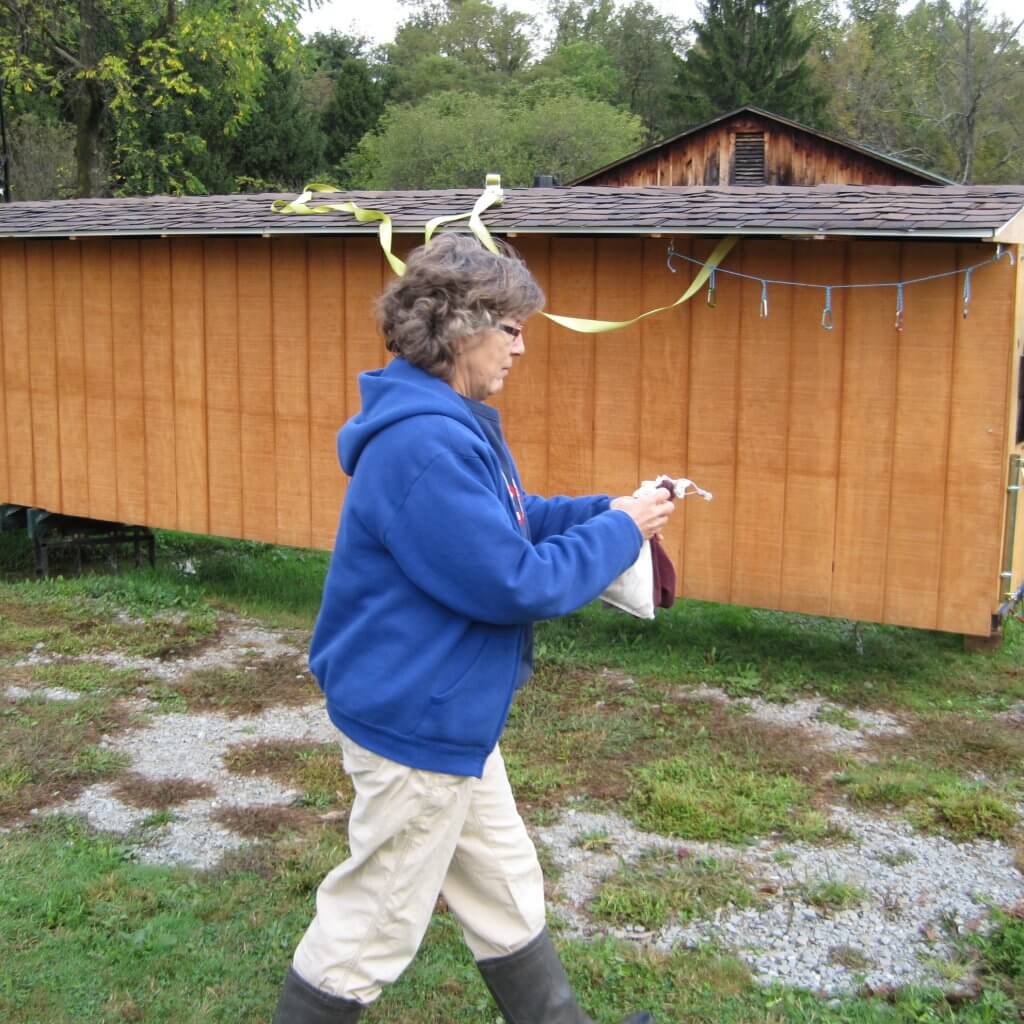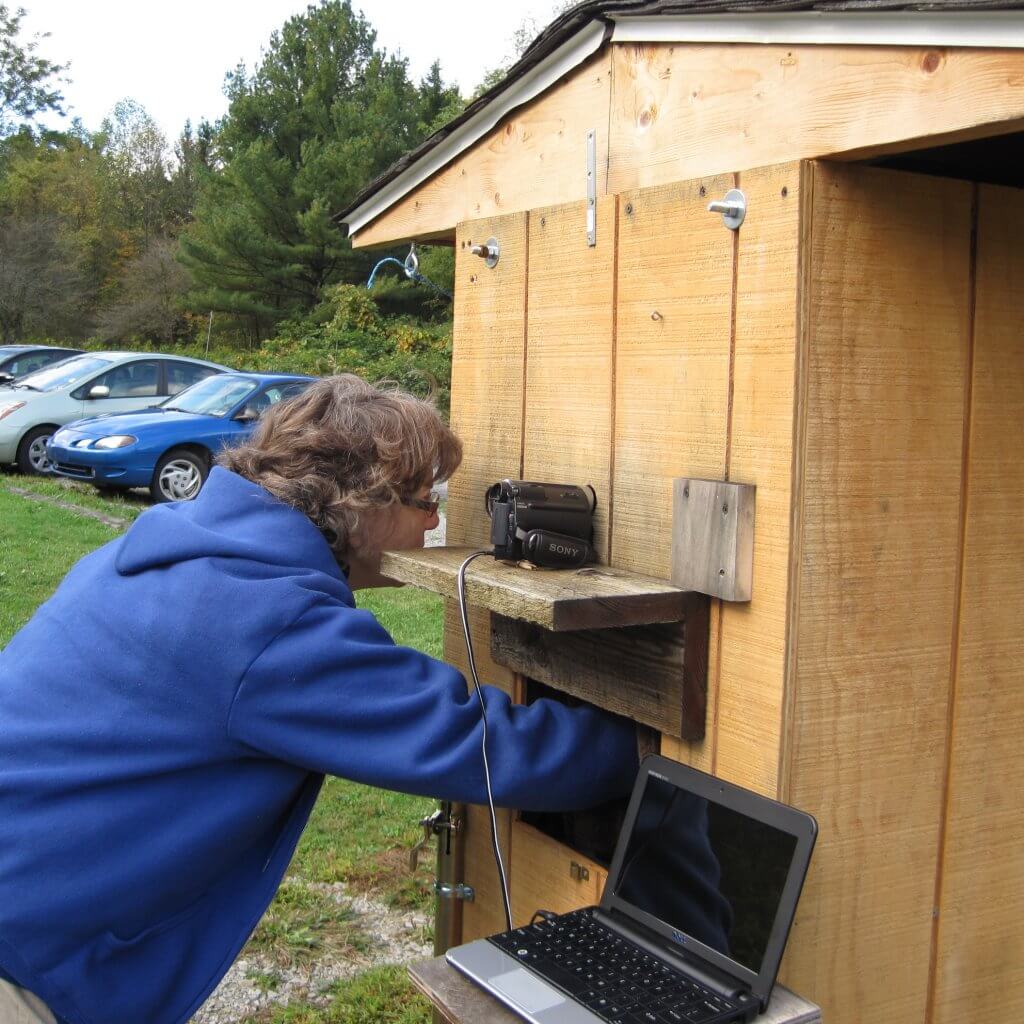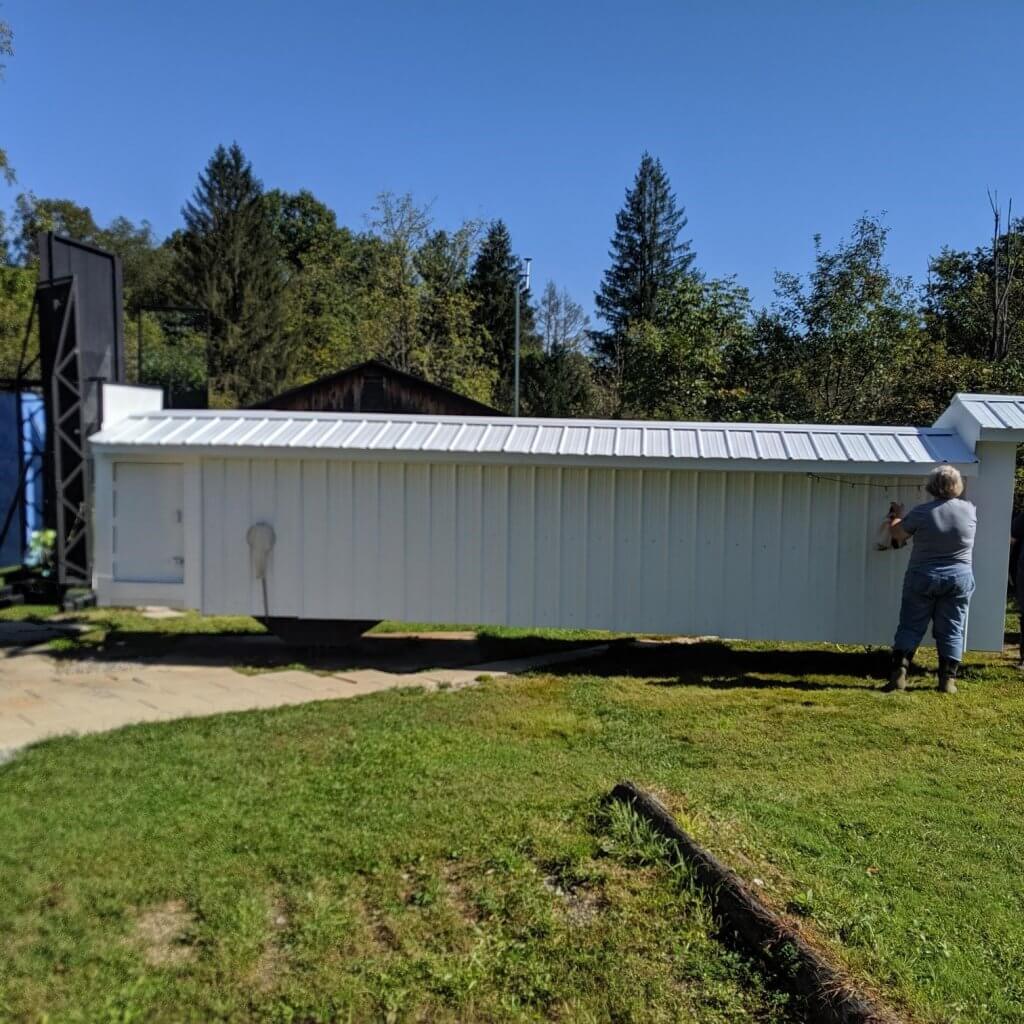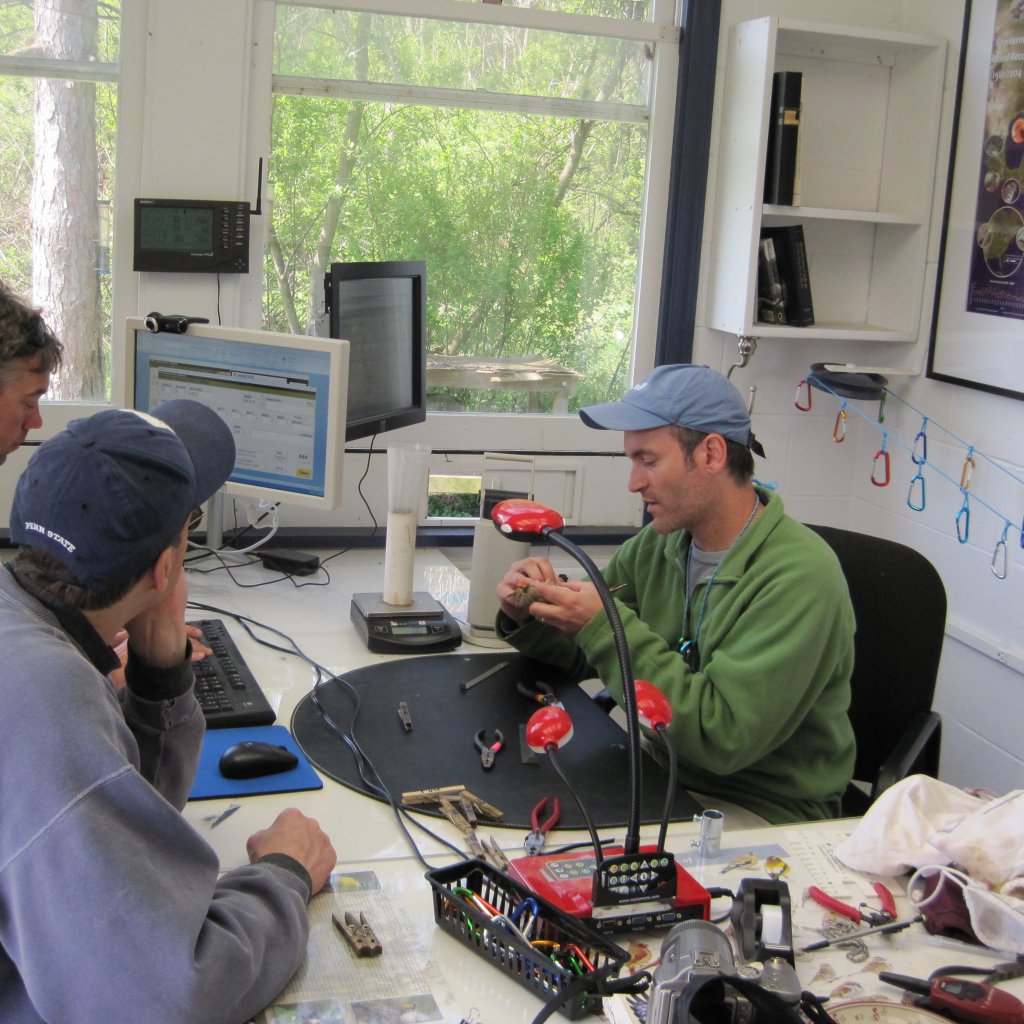Powdermill Avian Research Center (PARC) is a permanent bird-banding station in Rector, Pennsylvania. It is part of the Carnegie Museum and located in the 2,200-acre Powdermill Nature Reserve. In a typical year, more than 11,000 birds of more than 110 species are mist-netted, banded, measured, visually sexed, and weighed at the station. The majority are migratory individuals netted during spring and fall migration. This location, therefore, provides large sample sizes of species that are frequent victims of collisions.
All personnel handling birds for this project are experienced bird handlers under the supervision of a Master Bander operating under a federal permit from the U.S. Geological Survey's Bird Banding Lab. Birds mist-netted on trails near the banding station are removed from the nets by Powdermill banding technicians, placed in cloth bags, and taken to the station for banding and measuring. After banding, birds chosen to be tested in the tunnel are put back into a cloth bag and brought to the tunnel.



ABC's test tunnel is about 24 feet (eight meters) long and is constructed of plywood and particle board over a steel frame. At one end, the tunnel is open. About 18 inches in front of this opening, a mounting apparatus holds two panels of glass (or other material) side by side — usually a plain glass control and the test sample.
When a bird is brought to the tunnel for testing, the tunnel-testing technician removes it from the bag and evaluates it. Any bird that appears stressed is safely released without being put through a tunnel trial. For birds in good condition, the band number is recorded and the bird is released into the tunnel by hand through a sleeve set into the tunnel's end panel. Any bird that does not fly after 30 seconds in the tunnel is withdrawn and released.
Birds are observed and filmed as they fly down the dark tunnel toward the light at the far end, where they are presumably attempting to exit by flying toward either the invisible control glass or a test panel. A mist net in front of the glass prevents birds from actually hitting the glass — the net is also taut so that birds gently bounce off instead of getting tangled.


Flight type is recorded, as is each bird's destination: Did it head toward the clear control glass panel, toward the test glass panel, or to the side, floor, or ceiling of the tunnel? Data are recorded on a notebook computer, or on paper, as weather dictates. All trials are video recorded as well as observed live. After each flight, the operator releases the bird by opening a door in the side of the tunnel, level with the net.
Looking for glass for a new building, or a solution to fix existing windows? Search our comprehensive material database to find the right product.
Consistency matters, and the tunnel has some special features to ensure the efficacy of the trials. It is mounted on a pivot and is rotated every five minutes to keep a constant orientation, with the sun always directly behind the operator. Mirrors at the sides of the tunnel reflect ambient light onto the front surfaces, the “bird approach side” of the glass. Greatly reduced natural light falls on the back surface of the glass, mimicking the lighting differential between indoors and outdoors in buildings.
Test materials are presented in random order and in equal frequency on the left and right side. At regular intervals, proofing trials using two clear panes or no glass are run as a control. During these trials, equal numbers of flights to left and right indicate that the tunnel itself is not influencing the choice made by the birds.
See the Powdermill Tunnel in action! Discover Canada created this short film about ABC's glass evaluation program.
We score at least 80 trials per tested material to account for environmental variation and the fact that we are running trials with a variety of bird species. ABC defines the Material Threat Factor (TF) for a pattern or material as the percentage of birds tested that flew toward that material. So, if 20 0f 80 birds fly toward the tested glass, 20/80=25% and the TF=25.
Not all birds banded at PARC are tested in the tunnel — some are too large and might break through the net and hit the glass (e.g., Blue Jay, Wood Thrush), others are too small and might fly through the net (e.g., Ruby-throated Hummingbird), and still others tend to cling to the tunnel's interior walls instead of completing a trial (e.g., Ruby-crowned and Golden-crowned Kinglets, White- and Red-breasted Nuthatches, and Black-capped Chickadees).
Are birds colliding with your home or building? Use our guide to find solutions and protect birds!
Birds, unlike humans, are unable to understand or learn the concept of ‘glass' as an invisible barrier that can also be a mirror. Birds take what they see literally – and glass can appear to be habitat they can fly into, whether the habitat is reflected, or seen through a pane of glass.
Check out BirdCalls Blog for frequent updates and insights into birds and window collisions…. Read more >>